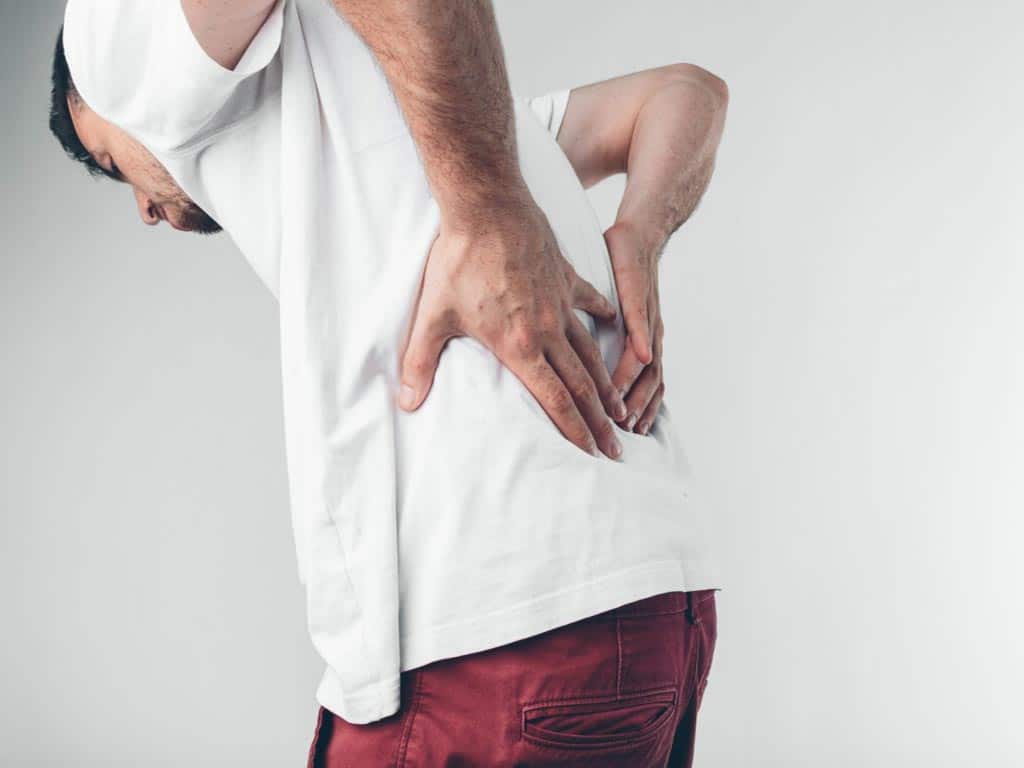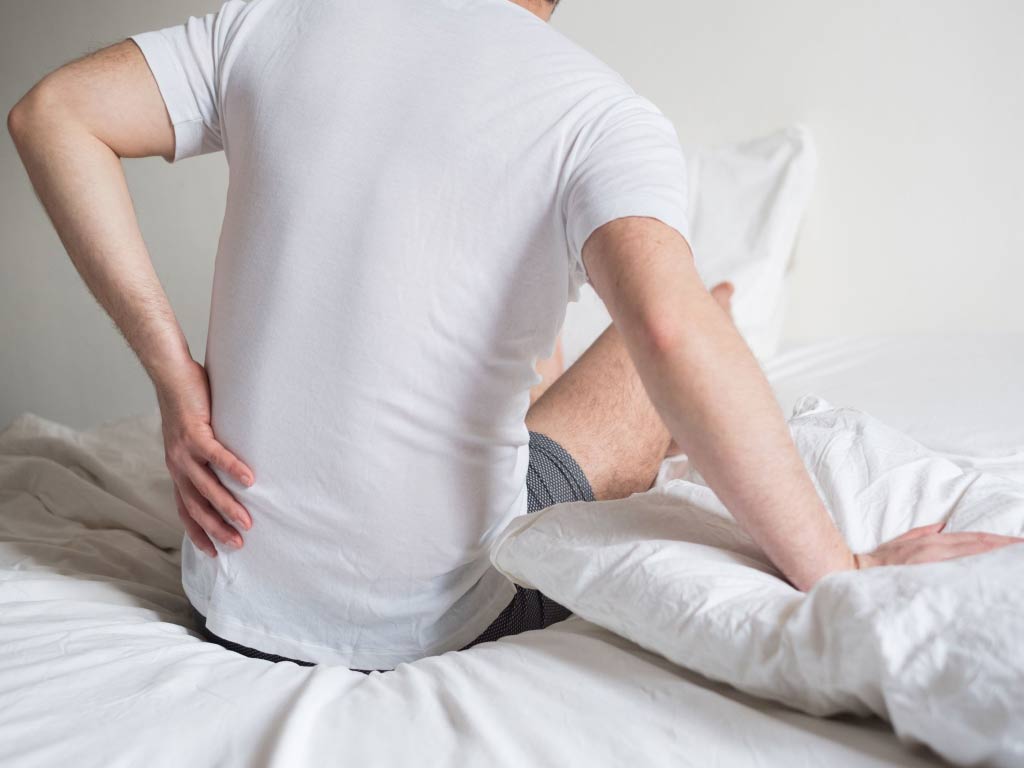
Muscle strain, degenerative conditions, and various medical issues can cause soreness in the back. Treatment options include medications, heat and cold therapy, and Transcutaneous Electrical Nerve Stimulation (TENS). Doctors may recommend pain relievers for relief while applying heat or cold can ease inflammation. TENS, using low-voltage electrical currents, may alleviate pain by disrupting nerve signals. Consulting a healthcare professional is crucial for proper diagnosis and tailored treatment plans for effective back pain management.
Back soreness can have numerous negative effects on people. It can cause discomfort and pain, making it difficult to perform simple tasks or engage in physical activities. The constant discomfort can also lead to decreased productivity and concentration. Additionally, back soreness can affect mood and overall well-being, leading to feelings of frustration, irritability, and even depression. This article will present back soreness, including its causes, medications, home remedies, and the use of TENS.
Causes of Soreness in the Back
Soreness in the back can be caused by various factors. One common cause is muscle strain, which occurs when the muscles in the back are overused or stretched beyond their limits. This can happen due to poor posture, awkward movements, or excessive physical activity. Muscle strain typically leads to a dull ache or sharp pain in the back.
Another cause of back soreness is degenerative conditions. These conditions involve the gradual wear and tear of the spine over time, such as degenerative disc disease or spinal stenosis. In these cases, the spinal canal or nerve roots may become compressed, resulting in severe pain that can worsen with certain movements or physical exertion.
Other medical conditions can also contribute to back soreness. Inflammatory diseases, such as ankylosing spondylitis, can cause chronic pain and stiffness in the back. Additionally, the sciatic nerve irritation or herniated discs can lead to back soreness, often accompanied by leg pain. It is important to consult with a healthcare provider to determine the cause of back soreness and to discuss effective treatments or therapies for relief.
Associated Symptoms and Risk Factors
Associated Symptoms:
- Dull ache or sharp pain, which may be localised or radiate to other areas such as the legs or buttocks.
- Muscle tightness and spasms, causing further discomfort and limited range of motion.
- Shooting pain, tingling, or numbness due to nerve compression or irritation.
Risk Factors:
- Maintaining bad posture while sitting or standing.
- Participating in daily activities that involve repetitive motions or lifting heavy objects.
- Carrying excess body weight places increased stress on the back.
- As people age, health conditions such as degenerative disc disease or spinal stenosis become more common.
- Lack of exercise can weaken the back muscles.

Medications and Home Remedies to Relieve Soreness in the Back
A variety of medications and home remedies can relieve soreness in the back. People commonly use medications like Nonsteroidal Anti-inflammatory Drugs (NSAIDs) to actively reduce pain and inflammation in the back. NSAIDs work by decreasing the production of certain chemicals in the body that cause pain and inflammation. These medications can be purchased over the counter or prescribed by a medical professional.
In addition to medications, several home remedies can help alleviate back soreness. Applying heat or cold to the affected area can provide relief by improving blood flow and reducing inflammation. Gentle stretching exercises can also help to relieve muscle tension and improve flexibility. Moreover, maintaining a healthy weight and practising good posture are important for preventing and managing back soreness.
In some cases, back soreness may be a symptom of an underlying medical condition. If the pain persists or worsens, it is advisable to consult a healthcare professional for an accurate diagnosis and appropriate treatment plan. They can guide the best medications and home remedies for relieving back soreness based on individual needs.
Regular Exercises to Reduce Pain
Several regular exercises can be beneficial in alleviating discomfort and strengthening the muscles in the back. For instance, stretching exercises can help relieve muscle tension and promote flexibility. Simple stretches like the hamstring stretch, where people gently bend forward while keeping their back straight, can help loosen tight muscles and reduce soreness.
Additionally, low-impact aerobic exercises, like walking or swimming, can increase blood flow to the back muscles and promote healing. These exercise routines also help maintain a healthy weight, which reduces stress on the back. It is important to start slowly and gradually increase the duration and intensity of workouts.

Using TENS as a Relief for Soreness in the Back
When it comes to finding relief for soreness in the back, one effective option is the use of TENS. It is a non-invasive technique that uses low-voltage electrical currents. By placing electrode pads on the skin, the electrical signals can help disrupt the pain signals travelling to the brain.
TENS works by activating the pain gate controllers in the spinal cord, which essentially acts as a barrier to pain signals. This helps interrupt the message of discomfort travelling to the brain. In addition, it triggers the release of endorphins, the natural painkillers of the body, providing a dual mechanism for relief.
Furthermore, TENS offers several advantages for managing back soreness. It can be used at home, giving individuals the convenience of pain relief whenever needed. Additionally, this therapy is generally safe and well-tolerated. Many people find that TENS helps them reduce their reliance on medications. Moreover, TENS can be easily adjusted, allowing users to find their preferred intensity and frequency.
How to Operate TENS
Operating a TENS machine is a straightforward process. To begin, the user should first ensure that the device is turned off and the batteries are properly installed. They can then attach the TENS electrodes to the affected area of the back. The user should ensure that the skin is clean and dry before attaching the electrodes.
Next, the individual should turn on the TENS machine and adjust the settings according to their preferences. They can start by selecting a low-intensity level and gradually increase it until they feel a comfortable, tingling sensation. By following these simple steps, people can effectively operate a TENS unit.
Conclusion
There are many causes of soreness in the back, like muscle strain and degenerative conditions. To find relief, people can take medications like NSAIDs for pain and inflammation. Home remedies, such as using heat or cold and doing gentle stretches, can also help. It is important to maintain a healthy weight and have good posture to prevent back soreness. If the pain persists or gets worse, people need to see a healthcare professional for an accurate diagnosis and personalised treatment.
Furthermore, people can use TENS for back soreness. This method uses low-voltage electrical currents to stop pain signals and promote natural pain relief. Individuals can use TENS at home or on the go, which makes it convenient. Operating a TENS machine is easy. Users should turn it off first, check the batteries, and attach electrodes to clean dry skin. After turning it on, they can adjust settings for comfort, starting with a low intensity.




















